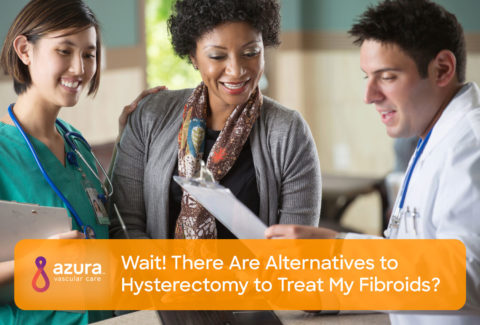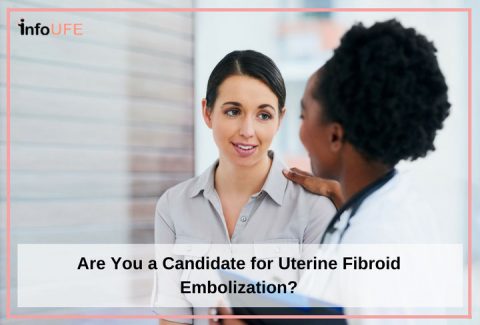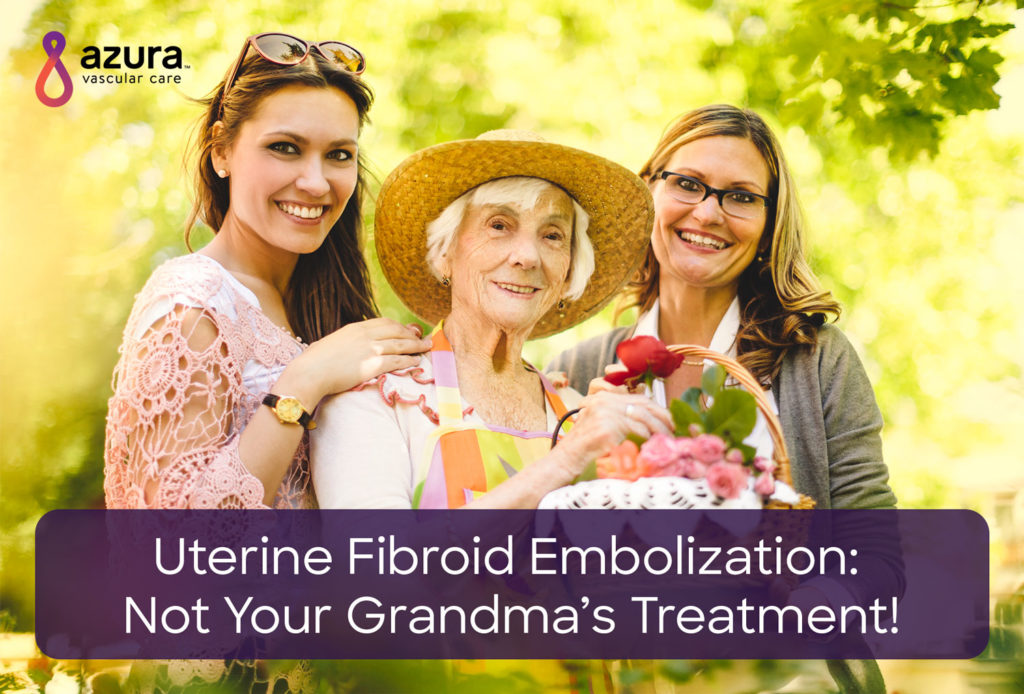
Most women occasionally experience some mild discomfort and inconvenience during their monthly menstrual cycle. For women with uterine fibroids, monthly periods can be anything but mild. Uterine fibroids are not cancerous, but they can wreak havoc on your life. Symptoms include heavy menstrual bleeding, fatigue, bloating, pelvic pressure or pain, frequent urination, constipation, embarrassment in social situations and painful intercourse.
Many women suffering from uterine fibroids think a hysterectomy is their only available treatment option, because that’s how their grandmother, mother, aunts and cousins treated their uterine fibroids many years ago.
Today, for many women, there’s a minimally invasive way to treat fibroids: uterine fibroid embolization, or UFE. This safe, effective, outpatient procedure provides quick relief with less downtime.
What Is Uterine Fibroid Embolization?
UFE is an alternative to surgery for the treatment of uterine fibroids. The procedure is typically performed by an interventional radiologist. Unlike a hysterectomy, UFE is a uterine-sparing procedure, meaning your uterus remains intact.
During UFE, your fibroids are not surgically removed; instead they are essentially killed off as they’re deprived of their blood supply, oxygen and the necessary nutrients they need to live and grow.
Typically, UFE is performed as an outpatient procedure, and most women are able to return home within hours after having the procedure. Many women can resume normal activities within two weeks of having UFE. i
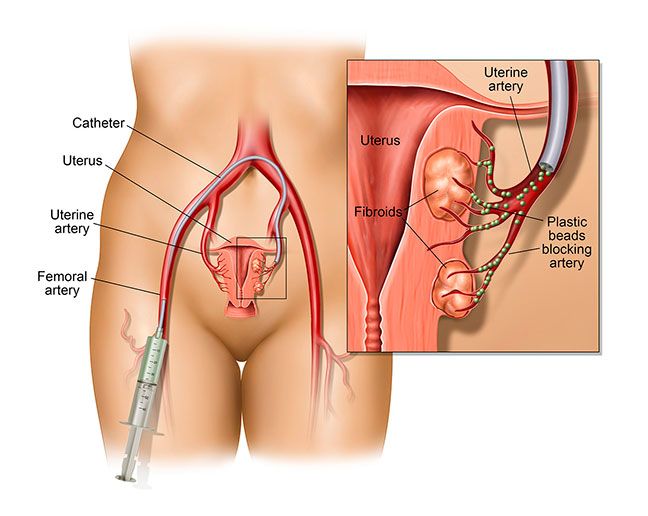
4 Questions About Uterine Fibroid Embolization
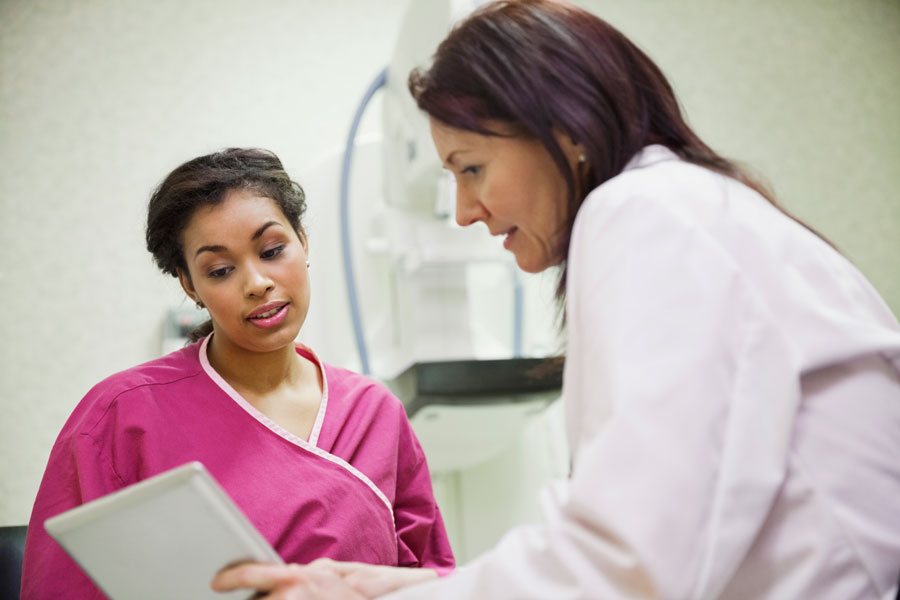
During UFE, the interventional radiologist makes a small nick in the skin to access the femoral artery in the groin area. Alternatively, the radial artery in the wrist can be used as an access point. The interventional radiologist next inserts a long, thin tube, called a catheter, into the artery. Using real-time x-ray imaging, also known as fluoroscopy, the catheter is guided into your uterine arteries to the location of the fibroids. Small spheres are injected through the catheter which block the arteries that supply blood to your fibroids. With the arteries blocked, the fibroids shrink and die.
When the procedure is complete, the catheter will be removed. Pressure will be applied to the insertion site to stop the bleeding and afterwards, will be covered with a bandage. Sutures are not required after this procedure.

UFE can be appropriate for women with fibroids of all sizes, unless the fibroids are very large. If you’re experiencing symptoms significant enough to warrant treatment, UFE could very well be a good option for you.
Pregnant women, or women with chronic kidney disease, an active pelvic infection or a urinary tract infection are not good candidates for the elective UFE procedure.

UFE has a lengthy list of benefits, including:
- Your uterus could shrink by at least 30% within 3 to 6 months
- As many as 90% of women experience decreased bleeding within 3 months
- Pain often improves within the first 3 months
- There is no scarring – either outside or inside your body
- Your uterus remains intact
- There is less overall risk than with surgical procedures
- The recovery period is quick (about 2 weeks for UFE compared to 3 to 6 weeks for fibroid-removal surgeries)
- Multiple fibroids can be treated during the same procedure
- Recurrence of treated fibroids is rare ii,iii

Uterine fibroid embolization is a safe and effective alternative to surgery. As with all medical procedures, there are some risks, but they are minimal.
- The most common symptom following UFE is pelvic pain, which typically peaks within the first 24 hours.
- There is a slight risk of bleeding at the catheter site. iii
UFE may be a viable alternative to surgery for the treatment of your uterine fibroids. Even if your mother, grandmother, aunt or someone else in your family had a hysterectomy or other surgical procedure to treat her fibroids, you should know that you have more options available today. If you have been diagnosed with uterine fibroids, speak with a UFE specialist to see if you are a good candidate for this safe, effective non-surgical treatment.
Sources:
i Khan, A.T., Shehmar, M., and Gupta, J.K. (2014) Uterine fibroids: current perspectives. International Journal of Women’s Health 6: 95¬–114.
ii Torre, A., Paillusson, B., Fain, V., Labauge, P., Pelage, J.P., and Fauconnier, A. (2014) Uterine artery embolization for severe symptomatic fibroids: Effects on fertility and symptoms. Human Reproduction, 29(3): 490–¬501.
iii Mara, M. and Kubinova, K. (2014). Embolization of uterine fibroids from the point of view of the gynecologist: pros and cons. International Journal of Women’s Health 6: p. 623-9.

